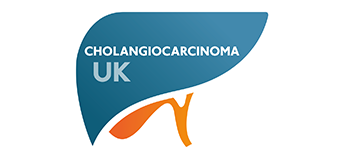AMMF’s Virtual 2021 European Cholangiocarcinoma Conference
Abstract No 8
Hypercalcaemia in advanced cholangiocarcinoma
Eirini Konstantinidou1, Jordan R Maurer2, Jennifer R Stanton2, Islam Baiev2, Joseph Franses2, Ryan D Nipp2, Lawrence S Blaszkowsky2, Jon Dubois2, Bruce J Giantonio2, Eric J Roeland2, Jennifer Y Wo2, Samuel J Klempner2, Aparna R Parikh2, Colin D Weekes2, Theodore S Hong2, Jill N Allen2, Ryan B Corcoran2, David P Ryan2, Jeffrey W Clark2, Andrew X Zhu2, Lipika Goyal2
1Beth Israel Deaconess Medical Center, Boston, MA, 2Massachusetts General Hospital Cancer Center, Boston, MA
Hypercalcaemia, one of the most common metabolic complications of cancer1, has not been well studied in cholangiocarcinoma. In this study, we evaluated the incidence, disease characteristics, genomic associations, and prognostic implications of hypercalcaemia in patients with advanced intrahepatic cholangiocarcinoma (ICC) or extrahepatic cholangiocarcinoma (ECC).
Patients with histologically confirmed advanced cholangiocarcinoma were identified from the Massachusetts General Hospital tumor registry and tumor biobanking protocol. Patients with albumin and calcium levels within 30 days of diagnosis of advanced disease were included in the ‘’Diagnosis cohort’’. Deceased patients with at least five calcium and albumin values over at least six months were included in the ‘’Disease Course cohort’’. Hypercalcaemia was defined as albumin-corrected calcium level ≥ 10.5 mg/dL and patients with at least one documented hypercalcaemic event were included in the hypercalcaemia group.
Incidence of hypercalcaemia during the disease course was higher in ICC than ECC (33% vs 16%; p=0.005). In patients with ICC, the frequency of IDH1 mutations was higher in patients with hypercalcaemia than normocalcaemia (32% vs 11%; p=0.004). In patients with ECC, poorly differentiated histology was more common in patients with hypercalcaemia than normocalcaemia (80% vs 25%; p=0.012). Additionally, patients with hypercalcaemia were more likely to present with ≥3 sites of metastases compared to patients with normocalcaemia in both ICC (33% vs 15%; p=0.013) and ECC (16% vs 2%; p=0.017). Furthermore, in patients with ICC, there was a trend towards poorer prognosis for patients presenting with hypercalcaemia (8.8 months vs 12.6 months; p=0.078). .Finally, hypercalcaemia in patients with ICC was more frequently treated with bisphosphonates compared to patients with ECC (17% vs 0%; p=0.0312).
In conclusion, hypercalcaemia is a common complication of cholangiocarcinoma which is associated with IDH1 mutations in ICC and widespread metastatic disease.
References
- Stewart AF. Clinical practice. Hypercalcemia associated with cancer. N Engl J Med. 2005;352(4):373-379
To view the poster, click here
Back to previous page






